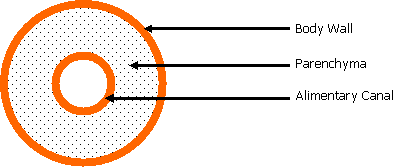NEET Animal Kingdom Questions: Online MCQs Test (Multiple Choice Questions) on Animal Kingdom. Quiz Test No. 6
Animal (Animalia) Kingdom: MCQs Quiz - 6
Congratulations - you have completed Animal (Animalia) Kingdom: MCQs Quiz - 6.
You scored %%SCORE%% out of %%TOTAL%%.
Your performance has been rated as %%RATING%%
Your answers are highlighted below.
Question 1 |
Insect mouthparts are adapted for different functions in different species. Mouthparts of houseflies are used for
Siphoning | |
Piercing and sucking | |
Sponging and lapping | |
Biting and chewing |
Question 2 |
Earthworms eliminate cellular wastes and excess water through excretory tubules called ______.
Nephridia | |
Flame cells | |
Coelom | |
Gizzard |
Question 3 |
In many animals the rapid change from the immature organism to the adult (change from larva to adult in insects) means
Cephalization | |
Molting | |
Metamorphosis | |
Endothermy |
Question 4 |
Sharks, skates, and rays are also called ______ fishes.
Jawless | |
Bony | |
Cartilaginous | |
Freshwater |
Question 5 |
In planarians water enters the body by ______.
osmosis | |
contractile vacuoles | |
flame cells | |
active transport |
Question 6 |
Animals, floating and drifting on the surface of water are ______.
Benthos | |
Pelagic | |
Plankton | |
Neritic |
Question 7 |
A phenomenon when parasite parasitizes themselves is known as
Hyperparasitism | |
Parasitoids | |
Monoxenous parasitism | |
Polyxenous parasitism |
Question 8 |
Air bladder is present in
Chondrichthyes | |
Star fishes | |
Actinopterygii | |
Flying fishes |
Question 9 |
All flat worms differ from all round worms in having
Triploblastic body | |
Solid mesoderm | |
Bilateral symmetry | |
Metamorphosis in the life history |
Question 10 |
The cross section of the body of an invertebrate is given below. Identify the animal which has this body plan.


Round worn | |
Planaria | |
Earthworm | |
Cockroach |
Question 11 |
Which one of the following groups of three animals each is correctly matched with their one characteristic morphological feature?
| Animals | Morphological feature | |
| (1) | Cockroach, Locust Taenia | Metameric segmentation |
| (2) | Liver fluke, Sea anemone, Sea cucumber | Bilateral symmetry |
| (3) | Centipede, Prawn, Sea urchin | Jointed appendages |
| (4) | Scorpion, Spider, Cockroach | Ventral solid central nervous system |
Option (1) | |
Option (2) | |
Option (3) | |
Option (4) |
Question 12 |
Which one of the following is NOT a characteristic of phylum Annelida?
Ventral nerve cord | |
Closed circulatory system | |
Segmentation | |
Pseudocoelom |
Question 13 |
Which one of the following is the true description about an animal concerned?
Cockroach – 10 pairs of spiracles (2 pairs on thorax and 8 pairs on abdomen) | |
Earthworm – The alimentary canal consists of a sequence of pharynx, oesophagus, stomach, gizzard and intestine | |
Frog – Body divisible into three regions - head, neck and trunk | |
Rat – Left kidney is slightly higher in position than the right one |
Question 14 |
Phylum mollusca can be distinguished from other invertebrates by the presence of
Bilateral symmetry and exoskeleton | |
A mantle and gills | |
Shell and non-segmented body | |
A mantle and non-segmented body |
Question 15 |
Consider the following four statements (a - d) about certain desert animals such as kangaroo rat.
(a) They have dark colour and high rate of reproduction and excrete solid urine
(b) They do not drink water, breathe at a slow rate to conserve water and have their body covered with thick hairs
(c) They feed on dry seeds and do not require drinking water
(d) They excrete very concentrated urine and do not use water to regulate body temperature.
Which two of the above statements for such animals are true?(a) and (b) | |
(c) and (d) | |
(b) and (c) | |
(c) and (a) |
Once you are finished, click the button below. Any items you have not completed will be marked incorrect.
There are 15 questions to complete.
Important MCQs on Animal Kingdom NEET | NEET Animal Kingdom online questions with answers



question no.14…molluscs do have gill…then why option 2 is incorrect
I have doubts on question no. 8 .it asks in which air bladder is present .osterichythes does hv air bladder and flying fish (Exocoetus) does comes under osterichythes.